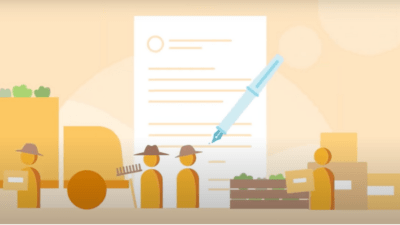in brief
The American Rescue Plan (ARP) Act includes many significant policies designed to improve the lives of children and families. One of the most powerful among them is the expansion and reform of the Child Tax Credit (CTC) for one year. Experts estimate that the CTC alongside other provisions of ARP will lift more than 5 million children out of poverty. This represents a 45% reduction in child poverty with substantial benefits for Black, Latinx and Indigenous families who have been disproportionately more likely to be denied the full value of this federal credit under prior law because they earned too little, according to The Center for Law and Social Policy.
Study after study has found that that when families are given tax benefits and can decide how to spend them, they manage the money in ways that improve their overall well-being: Kids get more schooling and the family’s nutrition and health improves. Recent changes to the Child Tax Credit address child poverty head-on by simply putting money in the hands of parents so that they can decide how to best care for their families.
why this matters
The 2021 Child Tax Credit was reformed in three meaningful ways:
- The tax benefit increased to $3,600 per child under age 6 and $3,000 per child between ages 6-17. Prior law provided a tax credit of up to $2,000 per child age 16 and younger. CTC will revert to this level in 2022.
- More families are eligible, meaning families with low incomes can now benefit. CTC had previous restrictions—earnings requirements, slow-benefit phase-in and caps— for low-income families.
- Families can opt to receive payments monthly.
NUMBER OF CHILDREN CURRENTLY IN POVERTY
Yet, there are challenges with this policy opportunity. First: It’s temporary. In 2022 the CTC will revert to the previous policy which left families with the lowest incomes behind.
Next, there is a lot of work to do to make sure that everyone eligible for the CTC claims the credit, especially families who are not typically required to file taxes. The Internal Revenue Service (IRS) has acted quickly to issue monthly payments—beginning July 15—to families whose information they had from tax returns, including those filed through the non-filer portal. But an estimated 4 to 8 million children are in families who do not typically file taxes and may need extensive outreach and assistance to claim the credits for which they are eligible.
the opportunity
When families are stable, children thrive. WKKF supports CTC implementation through a variety of investments, programs and funding strategies. A few examples include:
- The Center for the Study of Social Policy is exploring what works for families of color in order to design child benefit support and change the way the public thinks about income supports for families. Because they center communities of color in U.S. recovery efforts as a long-term policy strategy, their work ensures strengthening our institutions, economy and overall prosperity.
- Commonwealth, a national nonprofit building financial security and opportunity through systemic change, created a rapid response coalition to ensure stimulus provisions, including the CTC, provided by the American Rescue Plan Act, benefit as many low- and moderate-income families as possible by building awareness through tested messaging and driving action among organizations that serve low- and moderate-income communities.
The Center on Budget and Policy Priorities keeps a steady drumbeat of data, analysis and research to advance policies—CTC included—that promote racial and economic justice, reduce poverty and inequality, and broaden opportunity, financed in sustainable and equitable ways.








Comments